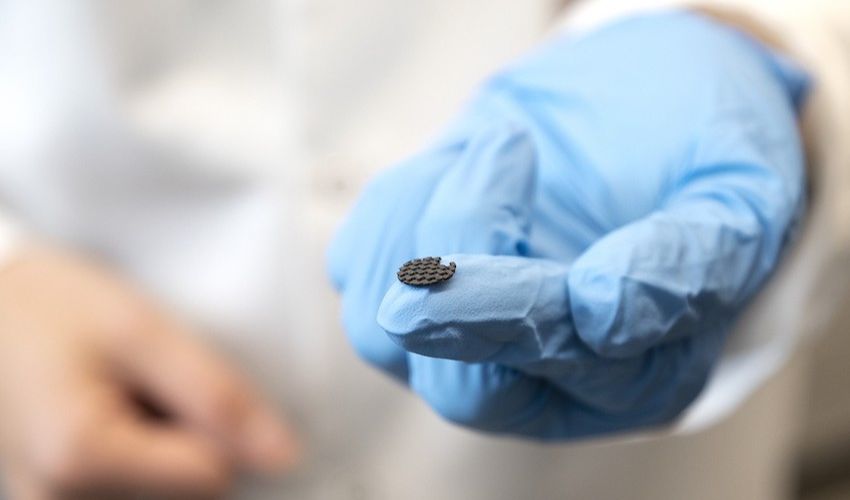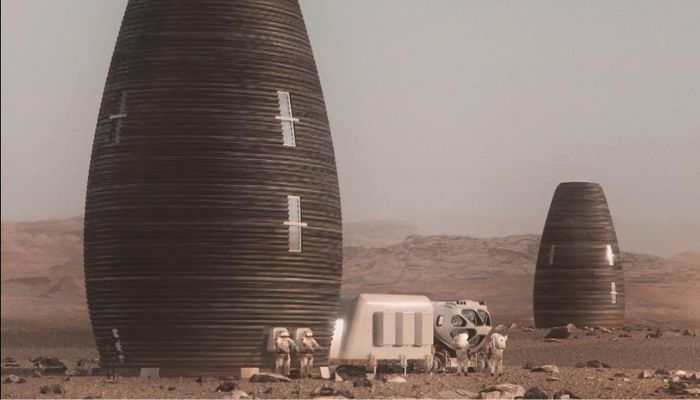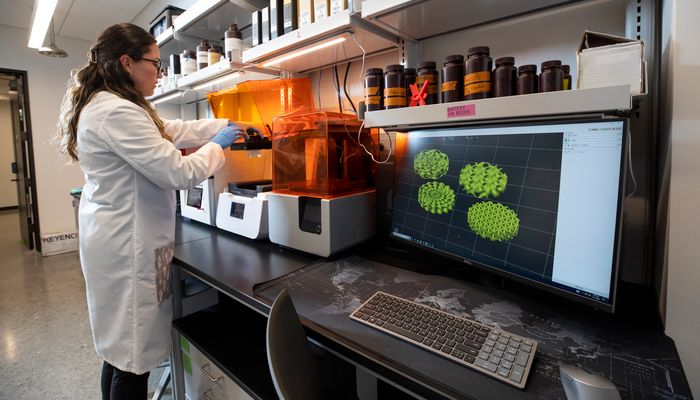The Project to Manufacture 3D-Printed Batteries from Lunar and Martian Regolith

It has been fifty years since the last crewed moon landing, but that does not mean that humanity’s desire to reach for the stars (or planetary bodies) has lessened. In fact, we have seen an almost revival in recent years in our efforts to not just reach other parts of the Solar System but also to conquer it. Additive manufacturing has been at forefront of these efforts. In fact, just last week, it was announced that the University of Texas at El Paso (UTEP) has become part of a project to maximize the sustainability of astronauts’ future lunar and Martian missions. It was awarded $615,000 in order to use 3D printing for learning how to make rechargeable batteries from lunar and Martian regolith.
This project is part of a larger effort to make it possible to return to the moon and Mars, as well as to support human operations once we’re there. The key to this is, obviously, reducing payload mass and dead volume. This is something 3D printing is uniquely suited for, in more than one way. In this case, the main benefit is its ability to produce locally. It could be possible to print infrastructure, including habitation modules, power generation, and energy storage facilities, on Mars or the moon. This project is a new attempt to do the former. Scientists will be able to create the batteries required to power small spacecraft and portable power devices as well as large-scale power system on other planetary bodies.

NASA is exploring how 3D printing can be used in various projects in space exploration. This includes these batteries, but also 3D printed homes for Mars and the moon. (photo credit to NASA)
3D Printing Batteries for Outer Space
UTEP’s work will be part of a larger $2.5 million project that includes Youngstown State University (YSU), 3D printer manufacturer Formlabs, as well as ICON. Both NASA and UTEP researchers have already made progress, as demonstrated in a recently published article by the American Chemical Society. “What Would Battery Manufacturing on the Moons and Mars Look Like?” It appears that two 3D printing processes, material exptrusion (ME), and vat photopolymerization(VPP) are being studied to create shape-conformable batteries. These batteries can be made from complex 3D designs that outperform commercial batteries.
Alexis Maurel Ph.D., French Fulbright Scholar at the UTEP Department of Aerospace and Mechanical Engineering explains further: “This project with NASA is an opportunity to demonstrate UTEP’s expertise in both energy storage and 3D printing. Additive manufacturing appears as a unique approach to manufacture shape-conformable batteries to support human operations in space and on the surface of the moon or Mars, where cargo resupply is not as readily available.”
These batteries will also be different than the ones we are used to seeing here on Earth. Although lithium-ion batteries are the most popular, they would not work on Mars or the moon because lithium is scarce in the soil. Instead, the researchers will be focusing their efforts on developing sodium-ion batteries as sodium is more readily available. One of the first steps in the project will be to extract precursors and battery materials from lunar and Martian rock. Although the UTEP/YSU has already developed composite resin feedstocks (for VPP), the team has not yet developed the sodium-ion batteries. NASA Marshall Space Flight Center and Ames Research Center also developed 3D printed composite materials that could be used for material extrusion.

UTEP will play a major role in leveraging 3D printers to create rechargeable batteries from lunar and Martian Regolith (photo credits to The University of Texas El Paso).
It is interesting to see the innovative ways 3D printing is being used for space exploration. UTEP also mentions that 3D printing could be used here on Earth. For example, they could be embedded in 3D-printed concrete walls and connected with solar generation to create compact, self-sustaining houses for disaster response and development. The publication HERE explains how the teams plan to 3D print these batteries with regolith.
What do you think about this grant to 3D-print batteries from lunar and Martian soils? Let us know in a comment below or on our LinkedIn, Facebook, and Twitter pages! Don’t forget to sign up for our free weekly Newsletter here, the latest 3D printing news straight to your inbox! You can also find all our videos on our YouTube channel.
*Cover Photo Credits: JR Hernandez / UTEP Marketing and Communications